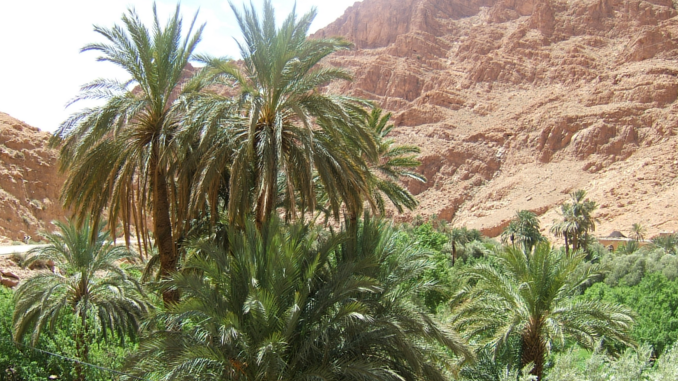
Hey, have you heard the one about the geriatric that went looking for a 2,000-year-old date? Well, it’s not true; I’m not a geriatric, no matter what you may have heard. Kidding aside, this Night Owl is about trees – specifically, an extinct species of date palm tree that produced big, juicy, fruit believed to have been superior in many ways to contemporary, commercially produced, dates.
Phoenix dactylifera, commonly called the date palm tree, is widely cultivated throughout the Middle East, North Africa (as far west as Morocco), and Western Asia (particularly Iran and Pakistan). The fruit is a staple in those regions, and there’s evidence that humans have been cultivating date palms for more than 8,000 years.
Two thousand years ago, Judea (which is in what is now southern Israel) was widely known for it’s exceptional dates. The Judean dates were large, juicy, nutritious, and thought to possess medicinal properties. What’s more, they could be stored for lengthy periods or shipped long distances without spoilage, whereas the fruit of other date palm species could not. Pliny the Elder wrote highly of them.
But not only are these trees abundant and bear largely in Judaea, but also the most famous are found there, and not in the whole of that country but specially in Jericho, although those growing in the valleys of Archelais and Phaselis and Livias in the same country are also highly spoken of. Their outstanding property is the unctuous juice which they exude and an extremely sweet sort of wine-flavour like that of honey.
PLINY THE ELDER, Natural History
Scholars point to history and weather as two causes of the extinction of Judea’s date palms. The Romans had put down the Hebrew rebellion by 74 AD, and began expelling Jews from their lands. This resulted in a drain of both the expertise and labor required to cultivate, maintain, and harvest date palms. Whereas the cultivars had propagated the best trees by cuttings, in the wild the trees self-propagated naturally through cross-pollination only. The seedlings produced, of course, contained many genetic variations. Over centuries, the first-rate date-producing palms prized by Pliny and many others of his era bred themselves out of existence.
Secondly, a change in the climate also contributed to the demise of the species. Judea was not always as arid as it is now and has been quite dry for at least a millenia. Date palms were abundant in the region 2,000 years ago because the local climate was wetter then.
As the area became drier and genetic variations of less-desirable progeny took over, the dates that grew in Judea became smaller, and lost the other qualities that made them enticing. By the nineteenth century, it is believed that Pliny’s favored variety was extinct.
In the 1960s, archeologists digging in the ancient Masada citadel near the western shore of the Dead Sea in Israel found date palm seeds that had been stored there by Hebrew defenders before the Roman army captured the fortress, circa 73-74 AD. Carbon dating confirmed the seeds to be at least 1,900 years old.
In 2006, Dr. Sarah Sallon and colleagues at the Louis L. Borick Natural Medicine Research Center in Jerusalem planted three of the seeds found at Masada. One of the seeds was still viable even after nearly twenty centuries. Amazingly, it germinated and grew into a re-born date palm tree. The study is documented in the research paper, “Germination, Genetics, and Growth of an Ancient Date Seed” (dated 13 Jun 2008). [Note, this paper requires a membership in order to view it].
Recently, Dr. Sallon and her research team succeeded in growing more date palm trees from an additional six seeds that had been stored from ancient times in Judea. One of these had been found at Masada, while the others were found at other archeological sites, notably caves. These specimens were also carbon-dated and found to be about 2,000 years old. Genetic testing demonstrated that four were male and two were female. The researchers named the female trees Judith and Hannah, and the male trees Uriel, Jonah, Boaz, and Adam. The original tree from the seed successfully germinated in 2006 was also a male, which they call Methuselah. (Who says science can’t be fun?) The research of this second study is recorded in “Origins and insights into the historic Judean date palm based on genetic analysis of germinated ancient seeds and morphometric studies” (dated 05 Feb 2020). [This paper is very interesting, and no membership is required to view it].
Genetic material had awakened after sleeping for two millenia, making these the oldest seeds to have ever been successfully germinated and grown into viable plants. Extinct no longer, these genetically-ancient trees may provide new insights into, and knowledge of, ancient agriculture and may even contribute toward the improvement of modern dates.
Question of the night: Do you know any good jokes that are less than 2,000 years old?
